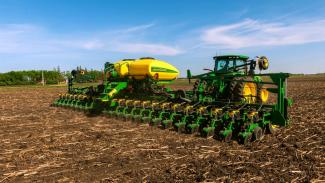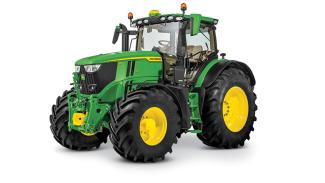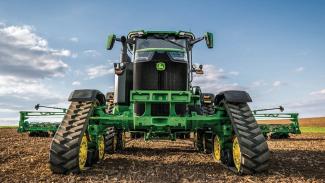Working to extend your farm's growing season can benefit your operation and the agricultural industry. When crops have more time to develop and mature, they produce higher-quality yields, which is more important than ever with a growing population. Continue reading to learn more about the growing season and ways to extend it.
When does the growing season start and end?
Spring planting marks the beginning of the growing season, with the fall harvest bringing it to a close. On average, the growing season for Indiana and Ohio can begin as early as the last week in April, with most planting occurring during May. Weather plays a significant factor in harvest, but the end of the growing season is generally mid-October to mid-November for Indiana and Ohio.
How can I extend the growing season at my farm?
Extending your growing season doesn't require multiple large changes to your operation simultaneously. Different options can be considered individually or combined to increase your efforts. Some of the main options for consideration include the following:
- Irrigation – Dry periods in the weather patterns can drastically reduce a crop's growing season. Watering your crops through irrigation helps maintain soil moisture and can extend the crop's growing season.
- Crop Varieties – Different crop varieties exist because of the different climates and growing conditions throughout the United States. When looking to extend your growing season, work with your agronomist or seed salesman to select a more cold-tolerant variety. If soil conditions are appropriate, you can plant earlier in the spring.
- Cover crops – Soil health and fertility go a long way in helping to extend your growing season. Cover crops can improve soil water-holding capacity by increasing soil structure and organic matter. With improved water-holding capacity, your soil can provide moisture to your crops during dry spells, reducing the need for irrigation.
What type of equipment can help my operation?
When looking to extend your growing season, the time it takes to plant plays an important role, and having a planter and tractor you can rely on is vital.
John Deere row crop tractors offer high horsepower and versatility with comfort and convenience to help your operation through pre-planting, planting, and harvesting. Row crop tractors are available in ranges of 140 to over 600 horsepower, in 6 Series, 7 Series, or 8 Series. Regardless of the size of the tillage tool, planter, or grain cart you are using, John Deere offers a tractor with the power you need to pull it.
From 8-row to 54-row, John Deere planters are designed to ensure your crop seeds are handled and planted carefully and accurately. The John Deere 1745 planter is a compact option available in up to 12 rows and four spacing configurations, 15-inch, 20-inch, or 30-inch, allowing you to use the same planter for various crops with different row spacing requirements. The compact design is ideal for easy operation during transportation in small fields or down narrow roads. One thousand seven hundred seventy-five planters are larger than the 1745 model and available in up to 24-row options. With flexible row spacing options, standard MaxEmerge™ 5 row units, and advanced seed metering and control systems, the 1775 model planter is a powerful option for your operation. The DB Series of John Deere planters is available in a 54-row option for large acreage operations. The DB planters feature a dual flat disk opener and central commodity system. With all features customizable, you can build a DB planter to fit your operation's exact needs.
Which precision technology systems can improve my yields?
One of the main goals of John Deere's precision technology is to help producers improve and maximize their yields. John Deere offers various precision technology systems designed to help improve yields, including:
- John Deere Operations Center™ - For farmers to make informed management decisions to optimize their yields, they must have accurate data to review and use to make those decisions. John Deere Operations Center™ is a centralized spot allowing farmers to collect, analyze, and share data collected through equipment.
- AutoTrac™ - Increasing yields starts at the beginning of the season with accurate seed placement. AutoTrac™ is a GPS guidance system for farm equipment designed to reduce overlap, skips, or gaps and provide precise row spacing. The same guidance lines can be used from tillage to planting to spraying to help improve accuracy and reduce crop damage.
- Variable Rate Seed Metering (VRSM) through SeedStar™ – Different soil characteristics can support different seed rates. Variable Rate Seed Metering is a system that uses sensors to monitor soil conditions. It combines that with the crop type, seed depth, and row spacing to automatically adjust the seed rate on a per-row basis. By optimizing see usage with this technology, farmers improve yields and reduce input costs.
Where can I find technology & equipment to improve efficiency?
When it comes to precision technology and agriculture equipment to improve your operation's efficiency, Koenig Equipment has experts to help you find the right pieces for you and your operation.
If you want to add precision technology to your current equipment, our Optimization Specialists will listen to your goals and help you find compatible technology to help you reach them. Are you looking to upgrade your existing equipment? A trained Koenig Sales Specialist can help you find the right fit for your operation and budget.
Contact your local Koenig Equipment to speak with experts today.
Additional Resources:
How Can I Prepare My Farm for a Successful Planting Season?
How Can John Deere AutoTrac™ Implement Guidance Improve Accuracy During the Planting Season?
How Can John Deere Ag Management Solutions Maximize My Harvest?




